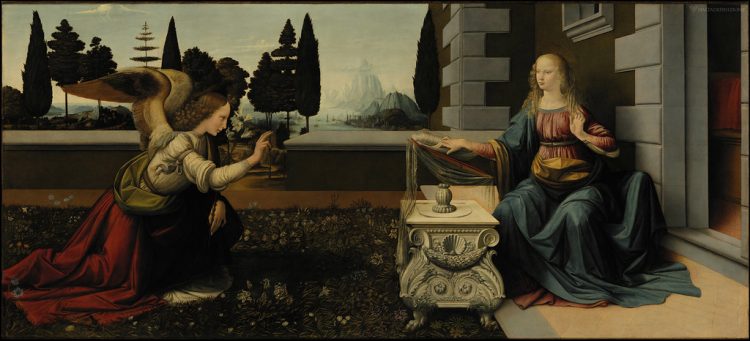
Mathematics in the Art of Leonardo De Vinci
We all know Leonardo de Vinci, because of his skillful intelligence and varied learning, he was a very famous and successful person. He was the master of fine arts, music, painting, and writing, but with this most people forget that he always considered himself as a scientist more than an artist. He was the master of mathematics and science. Leonardo has always brought the best out of his talent to set the perfect example of the Renaissance humanist ideal. He has always shown his keen interest in new developments and that is why he was also regarded as the model of Renaissance. According to him,
“the merit of painting lies in the exactness of reproduction. Painting is a science and all sciences are based on mathematics.”
Leonardo’s Early life
Shedding light on his early life, Leonardo da Vinci was born in Vinci. Italy on April 15, 1452. This week is remembered for the two most influential reasons, i.e. first, this is his birthday week, of course, and secondly, this week is also known as the second week in the month of mathematics and statistics awareness! Henceforth, this is the perfect week to celebrate a man as an artist and a mathematician. Moving forward on his education, it was said that he hasn’t received a lot of instructions on reading, writing, and mathematics. He was such a talented and intelligent man that, at the age of 14, Leonardo began his apprenticeship with local artist Andrea Del Verrocchio in France. It was an ideal opportunity for him to learn lots of things. Not only did Leonardo study drawing and painting, but he also got into carpentry, leather, and metalwork – all of which Leonardo would use as his interest in the subject of science and mathematics.
Leonardo applied mathematical principles in all his greatest works of art and even applied artistic abilities to his ground-breaking scientific inventions during his entire life, after his internship and other studies. His research shows that there is no divergent road to creating a beautiful and brilliant masterpiece, art and science work hand in hand.
Mona Lisa and the Golden Ratio
Many scholars did a lot of research and came up with the thought that Mona Lisa’s painting was done by Leonardo and he possibly used the Golden ration method in it, which is why this painting is one of his famous paintings. But now the question that arises here is what is the Golden Ration? And what role does it play in paintings? Well, the easiest answer in Arithmetic is that there are two quantities in the golden ratio if their ratio is the same as the ratio of their sum to the greater of the two quantities.
Use of the Golden Ratio in Leonardo’s work
In his art, Leonardo has not expressly written that he used the golden ratio, but it is clear that the Mona Lisa art complies with the golden ration in at least two ways.
No one knows if Leonardo did this for any reason, but he was probably a close friend of Luca Pacioli, the author of On Divine Proportion, a golden ratio treatise. And we also know that Leonardo believes that mathematics is a fundamental feature of all life and work, even including the works of art.
Vitruvian Man
The Vitruvian Man is not simply a beautiful piece of art but it was also Leonardo’s attempt to solve the geometric problem of squaring a circle. This was an old problem that was frustrating mathematicians for a long since the earlier days of Pythagoras.
The painting of Vitruvian Man was named after Marcos Vitruvian, an architect, and an engineer. He has said that if you view the navel of a person as the center, then you can use a compass to circumscribed a perfect circle around the person with outstretched arms and legs. Through the painting of Vitruvian, Leonardo attempted to solve the age-old problem of squaring a circle, taking the area of a circle and using it to create a square consisting of an equal area. Leonardo was not very successful in solving this problem due to the irrational nature of pi but he came quite close.
Perspective and Last Supper
Perspective is the most subtle discovery in Mathematics. Leonardo’s Last Supper is a masterpiece on the mathematics of perspective. In the painting, the architecture of the building around Jesus and the twelve apostles along with the subtle lines on the floor beneath the table demonstrates a single point perspective that serves as the subconscious focal point of the painting.
The love for Maths
​Da Vinci used his love for mathematics as a true Renaissance Man. In his works, he recorded his ideas for numerous scientific inventions, many of which were precursors to modern-day technological tools. For example, his idea of the Aerial Screw is the same basic design as the helicopter. But the best part of his work was how he incorporated Math in everything he did, including his artistic works of surpassing beauty. Through all his works he proved that Mathematics is the universal language and will be admired forever. He also insisted students study mathematics and make it their foundation.
